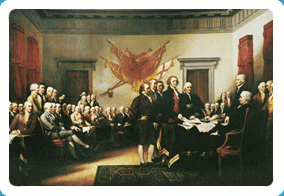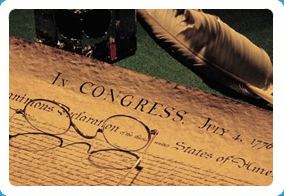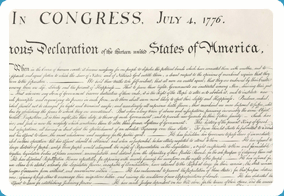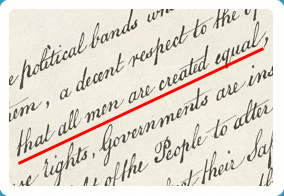The Declaration of Independence
at the National Archives
Drafted by Thomas Jefferson between June 11 and June 28, 1776, the Declaration of Independence is at once the nation's most cherished symbol of liberty and Jefferson's most enduring monument. The original is on display at the National Archives in Washington DC. Its second paragraph, one of its most famous lines, reads: “We hold these truths to be self-evident, that all men are created equal, that they are endowed by their Creator with certain unalienable Rights, that among these are Life, Liberty and the pursuit of Happiness.” As recognized by the 103rd Congress of the United States with Joint Resolution 175 of August 5, 1994, in writing those words Jefferson was inspired by an Italian: “the phrase in the Declaration of Independence `All men are created equal' was suggested by the Italian patriot and immigrant Philip Mazzei.” In his 1958 book “A Nation of Immigrants,” then-senator John F. Kennedy wrote about Mazzei’s influence on Jefferson and his impact on history: “The great doctrine ‘All men are created equal’ incorporated into the Declaration of Independence by Thomas Jefferson, was paraphrased from the writing of Philip Mazzei, an Italian-born patriot and pamphleteer, who was a close friend of Jefferson. A few alleged scholars try to discredit Mazzei as the creator of this statement and idea, saying that “there is no mention of it anywhere until after the Declaration was published”. This phrase appears in Italian in Mazzei’s own hand, written in Italian, several years prior to the writing of the Declaration of Independence. Mazzei and Jefferson often exchanged ideas about true liberty and freedom. No one man can take complete credit for the ideals of American democracy.”
|



